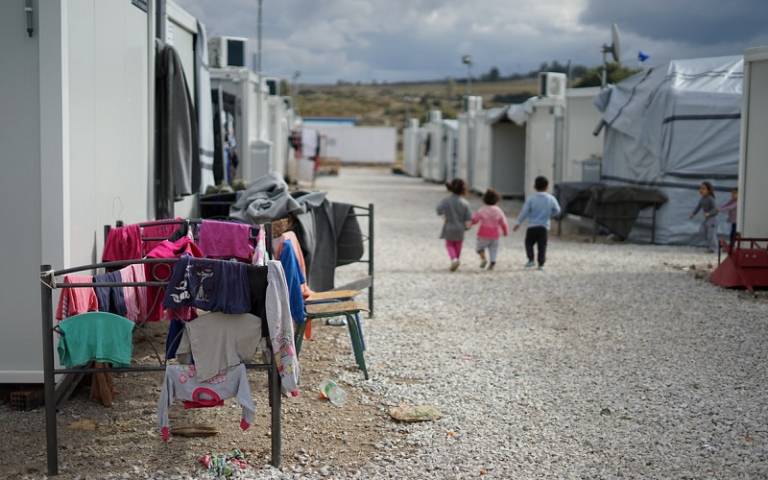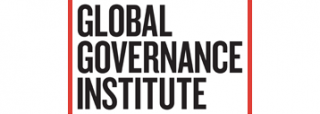Improving Accessibility of International Aid for Marginalised Refugee Populations
26 October 2021
We need better governance structures to ensure that international development aid reaches the most marginalised populations, argues Salwa Mansuri (GGI Research Assistant).

The COVID-19 pandemic has widened economic inequalities within and between countries, with already disadvantaged communities in low-income countries likely to be hardest hit by its long-term effects. Development aid could play a crucial role in addressing these inequalities. Yet, flawed eligibility criteria and non-transparent governance structures mean that international aid does not always reach the communities that need it most. This blog post focuses on an often-overlooked aspect of international development aid – the fate of refugee populations.
Towards more nuanced eligibility criteria: Taking refugees into account
More nuanced eligibility criteria for the receipt of international aid could help ensure that more resources are channelled towards marginalised populations. Currently, the primary eligibility criterium is Gross National Income (GNI) per capita, which includes both domestically produced output and income received from overseas sources. However, this measure fails to reflect the multi-dimensional nature of development and additional challenges a country might face – such as accommodating significant refugee populations.
Since calculations are based on official population figures, GNI per capita does not accurately account for refugees, which are not consistently included in national censuses. For this reason, GNI is also not a reliable determinant of national health outcomes, which are a crucial indicator of development. To access healthcare facilities, refugees are required to provide a proof of identity, which not all refugees possess in the wake of forced displacement. Hence, poor health outcomes for undocumented migrants and refugees are not formally registered and do not impact GNI.
Conversely, GNI-based eligibility criteria also obscure the potential benefits a country might derive from accommodating refugees. Refugee populations within host countries might not always have access to work permits, often due to discrimination and legal hurdles, not because they do not possess the necessary skills or experience. Yet, refugees may be provided temporary work permits or employment in the informal sector prior to naturalisation (becoming citizens), thus making considerable contributions to a country’s economic growth that are not reflected within GNI.
Ensuring aid reaches refugees and other marginalised populations
Even where adequate aid is provided to refugee-hosting low- and middle-income countries, there is no guarantee that displaced communities will actually benefit from it. Refugees often find themselves not just physically segregated from local populations but also legally and socially marginalised. This is partly a result of local tension, due to the “perception of refugees receiving aid while local residents suffer depressed wages and inflated rents.” However, it is important to stress that marginalisation of refugee populations is also state-driven, with host governments favouring the majoritarian population at the cost of minorities and non-nationals. As a result, foreign aid often fails to reach populations that states actively marginalise and discriminate against.
In the case of Myanmar’s Rohingya, discriminatory citizenship laws have left this community formally stateless, contributing to their plight as “one of the most ill-treated and persecuted refugee groups in the world.” Accountability has also been severely lacking, with Myanmar’s heads of states unwilling to acknowledge army-led atrocities on Rohingya communities. This raises an important question: How can the international community ensure that aid reaches intended recipients, especially where states fail to acknowledge human rights violations towards vulnerable populations? Currently, even in the case of project aid – where donor countries provide aid for a specific purpose – opaque internal distribution processes make it extremely difficult to provide accountability and monitor whether aid reaches marginalised populations.
Below, I develop two policy recommendations, laying out ways in which aid can reach displaced and other marginalised populations more effectively by fostering cooperation amongst various stakeholders, including intergovernmental organisations, regional institutions and grassroots communities.
The short-term solution: Grassroots organisations as aid distributors and human rights monitors
The first recommendation is for international organisations to channel aid increasingly towards grassroots organisations which work directly with marginalised populations, rather than entrusting states with the responsibility to distribute aid packages. Some intergovernmental forums, such as the Development Assistance Committee (DAC), are already fostering stronger relationships with NGOs and grassroots organisations. Aid provided to grassroots organisations could be conditional upon their collaboration in terms of reporting and documenting human rights abuses within the communities they work with. Thus, grassroots organisation could play a two-fold role: ensuring aid is received by the communities that require them and helping to expose human rights violations by providing organisations such as the Organisation for Economic Co-operation and Development (OECD) with information on abuses that take place on the ground.
The long-term way forward: fostering transparent governance systems
On a deeper level, the issue of state-led marginalisation of vulnerable populations, such as refugee communities, exposes inherent transparency flaws in governance structures. Addressing these structural flaws will be essential to improve aid provision in the long run, since a complete diversion of resources towards grassroots organisations is neither feasible nor sustainable. After all, governments provide the basic physical, legal and social infrastructure upon which development activities depend and which are also key to the functioning of NGOs and grassroots organisations. Thus, while increased channelling of aid to non-state entities could help push states towards governance reform, it cannot “replace” state-led aid management and project implementation.
Conclusion
Accessibility of international aid for refugees and other marginalised populations is currently restricted by two related challenges: narrow eligibility criteria and non-transparent governance systems. The latter is particularly consequential because refugees face systemic state-led discrimination, often without any access to effective accountability mechanisms. This has been evident in multiple cases such as the Rohingya refugee crisis and the Syrian refugee crisis. Redirecting aid towards grassroots communities could help channel aid more effectively to marginalised communities. Grassroots organisations are also uniquely placed to monitor and report human rights abuses on the ground, amplifying the voice of refugees on the international level. Ultimately, however, this must serve to tackle bureaucratic opaqueness and state-led discrimination, ensuring that governance structures become more transparent and equitable over time.
 Close
Close


